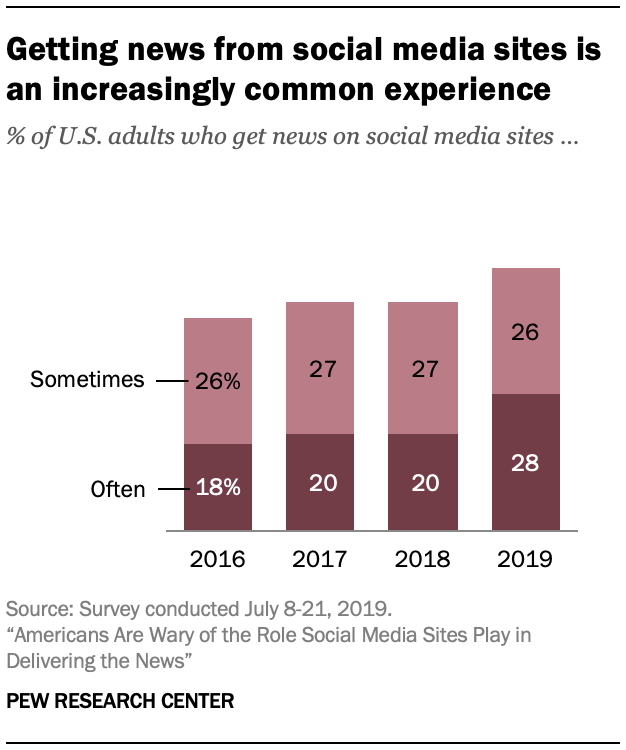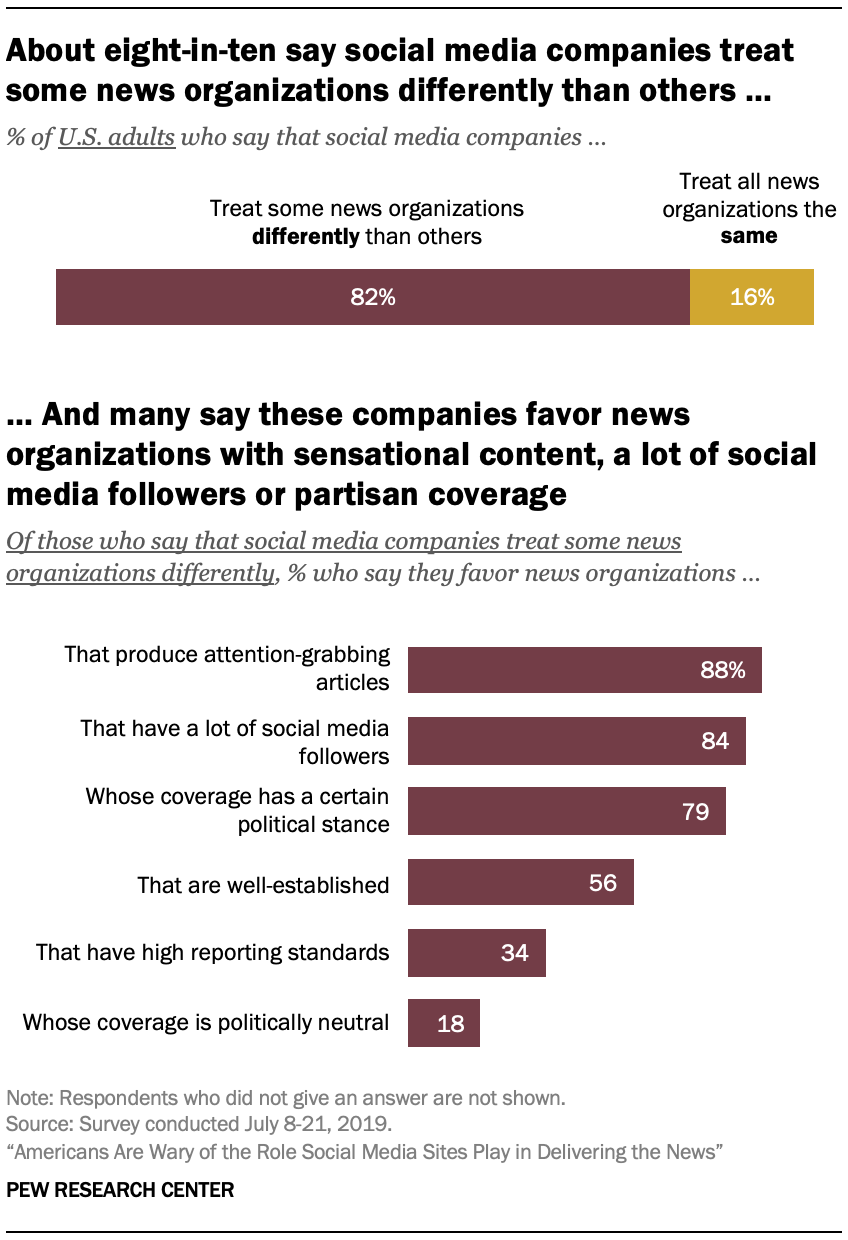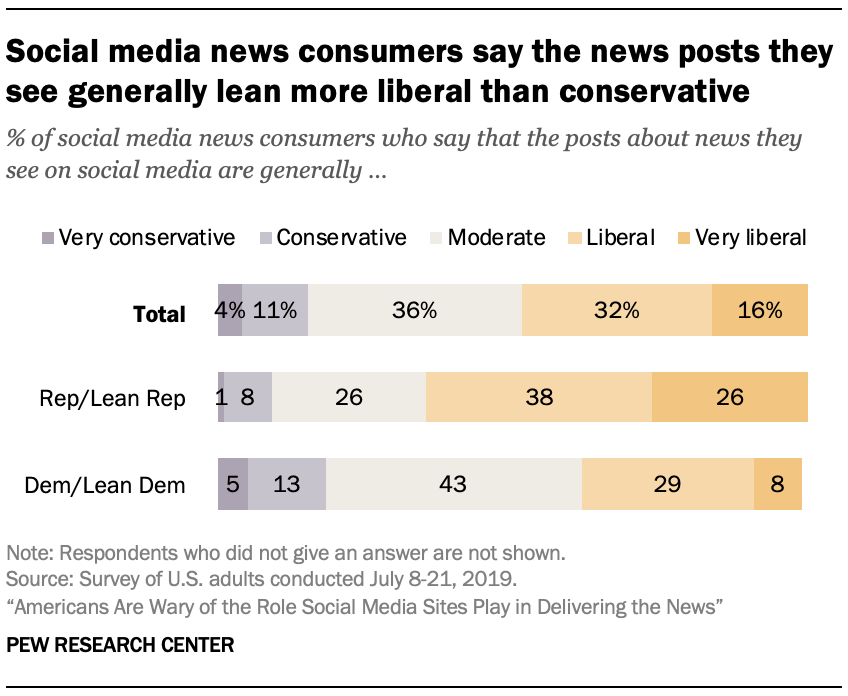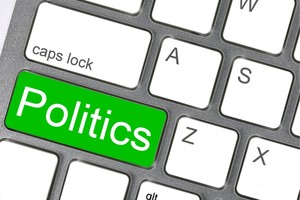As News Grows on Social Media, Trust Shrinks

Social media has become an epicenter for up-to-the-minute news on just about everything. Predictably, like many of the speed and convenience driven habits society has recently adopted, it’s not very healthy. And while people seem to see that, it’s not enough to stop them from scrolling.
As social media companies gain massive influence, their role in the news media is expanding. Between 2018 and 2019, the number of adults using social media for news “sometimes” or “often” grew from 47% to 55%, according to a Pew Research Center survey of over 5,000 people.
News outlets are finding that the quickest, easiest way to the audience is meeting them where they already are — on social media.

In spite of this steady climb, the public’s trust in social media to mediate the news falters. 62% of respondents said social media companies have too much control over the news people see; 55% said that ensures a worse mix of news on the platforms.
Reasons for the skepticism speak to core flaws in the system. More than 50% said one-sidedness and inaccuracy were “very big problems” with news on social media. Both Republicans and Democrats said less than one-fifth of the content they see leans conservative while roughly half leans liberal.
A whopping 82% said social media companies treat some news organizations differently than others, typically favoring attention-grabbing, highly-trafficked or politically motivated content.

The flaws are easy to see and even easier to conceive. The social media marketplace favors volatility, and without trained gatekeepers in place to weed out misinformation, anything can spread if aptly promoted. The climate rewards clickbait, which is why some “news” headlines ignore balance and fairness in favor of targeted political agendas.
Some journalists forget what their audience needs, and simply settle for giving readers a whole lot of what they think they want.
Numbers suggest personal politics and biases can skew the information flow, as much as journalists might hate to admit it. While Facebook’s political demographics remain murky, data suggests that Twitter is dominated by active young Democrats.
Journalists love Twitter — it’s the most popular social network for journalists, with over 80% saying they use it — and while most journalists claim political independence, left-leaning reporters steadily outnumber right-leaners (a 2013 study by Indiana University found that liberal journalists outnumbered conservatives 4 to 1).

The problems are as notable as they are unavoidable. But despite all the drawbacks, news on social media is proving to be the go-to for many, either beating out traditional methods that are hidden behind paywalls or TV news that is now dominated by commentary.
How it works seems clear enough on the surface — grab the phone, open an app and scroll — but the extent of algorithmic influence over what users see remains mysterious.
Bipartisanship, if nothing else, seems to have a place in the watchdogging of Big Tech. The Filter Bubble Transparency Act, introduced by Sen. John Thune (R-SD) and co-sponsored by several other lawmakers, is aimed at forcing companies to disclose details about those “secret algorithms” when applying user information that wasn’t explicitly provided to curation technologies. Users will ideally come to understand how/why their digital footprint is impacting their online experience.
Highlighting the complexity of the issue seems to (fittingly) be governmental incompetence; there’s a decent chance the lawmakers leading this charge don’t know what they’re doing. Verge reporter Adi Robertson suggests the bill’s sponsors are struggling to verbalize the legislation’s intentions, further complicating the issue with vague language and shallow insight.
Scrutiny — properly researched or not — continues to mount, forcing social media giants to hastily polish information consumption on their platforms.
Facebook has started paying verified publishers, including The Washington Post and the Wall Street Journal, to supply content for its “News Tab,” and Twitter users will soon be able to follow specific “Topics” in their timeline. How journalism will be protected and fostered on these platforms, however, remains to be seen; Facebook has recently begun banning posts that name the alleged Ukraine whistleblower.
People remain increasingly vulnerable to technology’s unflappable evolution. In the age of automation, the delicacy of information gathering and news consumption is lost in the rush. Data suggests people don’t trust social media companies, with all their obsessions with speed, convenience and volatility, to present a full and unbiased picture — but data also says most users visit these platforms in search of precisely that.
While the forces that influence news consumption continue to grow and intensify, readers must be diligent in searching for truth, and journalists must understand their role in harnessing digital forces for good. Hopefully, in the end, transparency and democracy prove most profitable for Big Tech.
Julie Mastrine, AllSides Director of Marketing, reviewed this piece. She has a Lean Right bias.
Samantha Shireman, AllSides Information Architect, reviewed this piece. She has a Lean Left bias.


May 16th, 2024

May 16th, 2024

May 16th, 2024